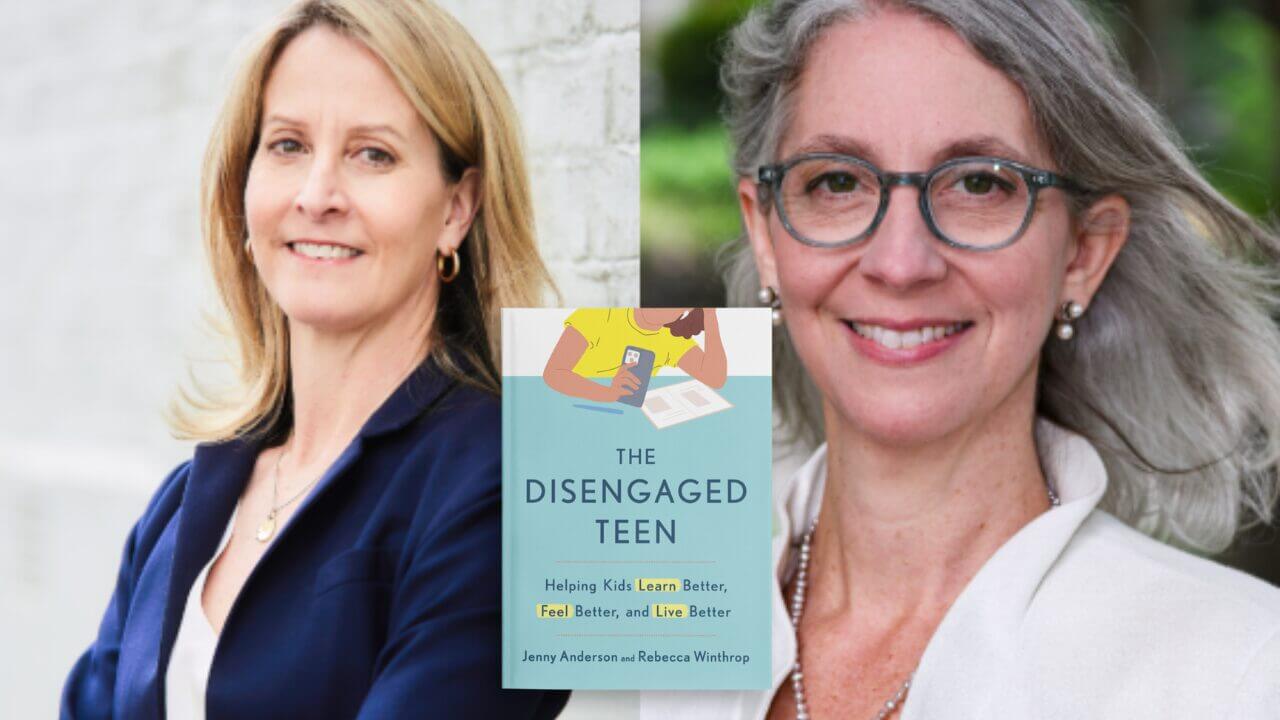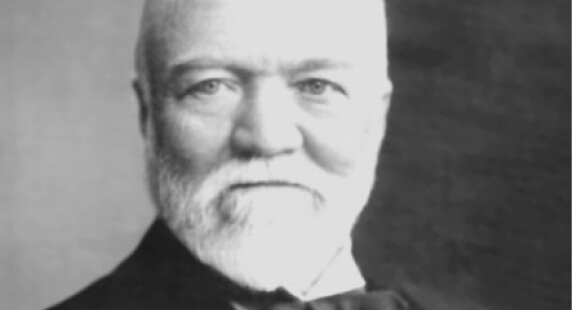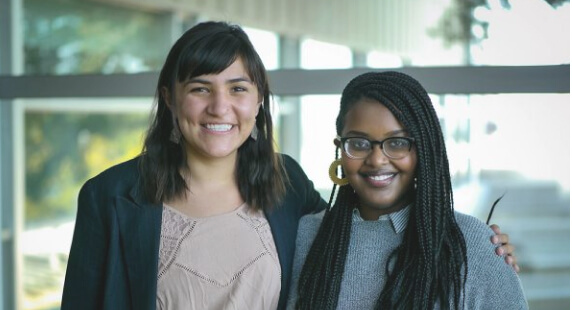Engaging Minds, Changing Futures: A Deep Dive into Student Engagement and Learning

Explore this insightful Q&A with award-winning journalist Jenny Anderson and global education expert Rebecca Winthrop as they discuss the evolution of education reporting, the transformative power of family-school engagement, and what parents can do to ensure their children thrive. Anderson, who spent over a decade at The New York Times before pioneering coverage on the science of learning at Quartz, brings a wealth of experience in education journalism. Winthrop, the director of the Center for Universal Education at the Brookings Institution, focuses her research on innovative education strategies and family engagement. Together, they share perspectives on the current opportunities for educational transformation, highlighting the critical role of media, parents, and policymakers in shaping a more engaging and effective education system.
Their collaborative work includes their recently launched book, The Disengaged Teen: Helping Kids Learn Better, Feel Better, and Live Better, which delves into strategies for reconnecting adolescents with their love of learning. Drawing on extensive research and real-world stories, Anderson and Winthrop provide practical guidance for parents and educators to support teens’ academic and emotional flourishing.
How has education reporting evolved since you first entered the field?
Jenny Anderson: There are extraordinary education reporters and trade publications like The74, Chalkbeat, and the Hechinger Report that do great work covering the sector. The issue is that those outside of education rarely read trade publications. Education needs to be a part of the national conversation, and unfortunately, it still doesn’t get the attention it deserves.
There have been some improvements, especially after COVID-19. The pandemic gave parents a glimpse into the education system, sparking greater interest and media attention. Issues like chronic absenteeism and learning loss became front-page topics, but it’s disheartening that it took these crises to recognize that learning is an incredibly important issue to cover.
Rebecca Winthrop: I agree, Jenny. There has been a blossoming of education trade media coverage, but mainstream media still prioritizes other beats over education. A Brookings study from years ago showed that education received less coverage than health, and what was covered in health focused on research studies affecting people’s lives and education often focused on sensational stories rather than substantive issues like how children learn or what effective teaching looks like.
Jenny: That’s a critical point, Rebecca. I remain hopeful. I’ve seen beats emerge and gain prominence, like climate reporting at The Times. What began as a few stories turned into a well-staffed, sophisticated desk because the issue demanded it. Education deserves that same investment. With dedicated reporters and a focus on learning science and development, we could transform how education is covered. It’s possible—if people care enough to push for it.
At Carnegie, we believe this is a pivotal moment for educational transformation. What do you see as unique about the current educational moment?
Rebecca: There are two or three major shifts that make this moment very ripe for deep transformation—or leapfrogging if you will. These shifts are: AI, assessment, and demand. First, AI is going to shift teaching and learning radically. At Brookings, we’ve launched a global task force on AI and education. One key insight so far is that AI adoption in education is likely to happen much faster than previous technologies, such as desktop computers or laptops. This speed poses both opportunities and challenges. As an education community, we can either get ahead and steward it, or it will happen to us. AI has the potential to significantly alter how we ensure young people acquire and apply knowledge, and has enormous potential if we can guide it effectively.
Second, we need to shift assessment by rethinking how we measure learning and make it visible. The skills young people will need in the workforce—such as creativity, collaboration, and critical thinking—don’t fit neatly into traditional assessments. There is innovative work happening in this area that Carnegie is involved in to help redefine what and how we measure student learning.
Third, the demand side of education is more activated than ever. Post-COVID, parents have gained unprecedented visibility into their children’s learning experiences. Surveys consistently show parents now expect more transparency and involvement in their kids’ education, leading to higher rates of exit from traditional public schools to micro-schools, homeschooling, and other alternatives. Parents are saying, “This system isn’t working for my child. It’s not engaging or meeting my child’s needs.” This heightened parental engagement is a significant opportunity to include families in the educational transformation process. They’re the ones who will vote for or against systemic changes, and their support will determine whether education leaders can sustain needed change.
Jenny: I think we can look at this from two levels: systems-level and the demand-level or parent-level. The latter is where I’ve always worked, so let me start there. Too many kids are deeply unhappy, and it’s reached a point we can no longer ignore. There’s always been an element of kids complaining about school—that’s nothing new. Typically, kids are very happy in elementary school, but there’s a steady decline in enjoyment from middle school to high school. For example, in 5th grade, 75% of kids say they enjoy school and find it worthwhile, but by 12th grade, that drops to 35%. That’s a shocking statistic, yet many people have just accepted it as normal.
This is why we must focus education on preparing kids, giving them agency, and helping them engage in their learning. All of this requires different policies and approaches. From our work, it’s clear that people are now unhappy enough to embrace change. COVID broke the social contract. Many families no longer feel the same obligation to send their kids to school. This creates a space for innovation and transformation that didn’t exist before.
Rebecca: I’d like to add a small note, Jenny, to your point about parents not feeling the need to send their kids to school. I actually think many parents do feel the need to send their young people to school, but the kids won’t go, and parents are distraught because they can’t get them there.
Jenny: Yes, great point, and at the same time there are also a lot of parents who are actively choosing not to engage with the system because they feel it doesn’t work for them.
On the systems-level, we must reshape the fundamental architecture of education. The idea of broader pathways for young people is gaining traction. For example, some parents who might have previously viewed college as the only path are now more open to alternatives. There’s also a broader range of opportunities that can help young people enter the workforce in less linear, more flexible ways. This mindset shift, combined with the growing availability of these pathways, makes this moment ripe for systemic change.
You both have a book coming out in the new year titled, The Disengaged Teen: Helping Kids Learn Better, Feel Better and Live Better. What was the impetus for writing this book in partnership? Did the book land where you thought it would or did you surprise yourselves along the way?
Rebecca: I reached out to Jenny about writing a book because I was really worried about the lack of support in helping the public–particularly parents–understand education and make decisions for their young people, especially during and after COVID.
On a personal level, I have two boys, and during COVID, I completely misjudged which of them was engaged in learning. Once they had to do self-directed, independent learning, I realized my “achiever,” who was getting top grades before, was deeply disengaged. It struck me that if I, with 25 years of experience in education, couldn’t gauge my own kids’ engagement, it must be incredibly challenging for others.
Jenny: We originally wanted to empower parents with knowledge about learning science by highlighting practices from exemplary schools. But after about a year we pivoted to focus on what parents can do at home because not all parents have access to innovative schools. I had always focused on communicating directly to readers. Rebecca had been doing incredible work on family-school engagement, so we refocused the book on helping parents support their kids to become better learners who are more engaged, self-aware, and able to manage their own learning journeys.
This book is our attempt to make things a little easier for parents. It’s not about solving problems as if kids are the problems, but about addressing the challenges families face. When your child is struggling, it’s incredibly hard. Our hope is to provide expertise and empathy to help parents feel less stuck and better equipped to support their kids.
What findings can you share about the importance of strong family-school engagement?
Rebecca: I did a lot of work on identifying education innovations that could equip young people with the skills needed for life, work, and citizenship. Through this, I interviewed over 100 innovative education leaders, both inside and outside formal school systems. A recurring theme was how these leaders faced significant pushback from parents when introducing innovations, often forcing them to roll back their efforts. This made me curious.
After deeper investigation, I realized that many education leaders aren’t trained to communicate effectively with parents and families about what meaningful learning looks like or how to assess it. Parents primarily rely on report cards, so any changes to traditional metrics create confusion and resistance.
We launched the Global Family Engagement in Education Network to explore this issue. We knew the power of parents and caregivers. When parents, teachers, and school leaders work together with trust, schools are ten times more likely to improve across a range of outcomes from student achievement to well-being, according to Burke and Schneider’s longitudinal study.
In your book, you lay out four modes of engagement. What are these modes and why do they matter?
Jenny: We identified four modes of learning. These are not labels and are not meant to pigeonhole kids but rather help them and their parents understand how they are showing up for learning. Parents can use them to help their kids when they get stuck in one. The four modes of engagement are:
- Resister: When kids resist, they struggle silently with profound feelings of inadequacy or invisibility, which they communicate by ignoring homework, playing sick, skipping class, or acting out.
- Passenger: When kids coast along, they consistently do the bare minimum and complain that classes are pointless. They need help connecting school to their skills, interests, or learning needs.
- Achiever: When kids show up, do the work, and get consistently high grades, their self-worth can become tied to high performance. Their disengagement is invisible, fueling a fear of failure and putting them at risk of poor mental health. They need help taking on new challenges and encouragement that they matter beyond their achievements.
- Explorer: When kids are driven by internal curiosity rather than just external expectations, they investigate the questions they care about and persist in achieving goals. This is the pinnacle where kids become resilient learners and build skills to help them thrive in an AI-dominated world. Parents should aim to have their kids spend as much time in this mode as they can. And they should help when their kids get stuck in a mode. That’s when a mode can become an identity.
There are a lot of conversations about what it means to get to and through postsecondary education whether it be college, workforce, or the military. Since adolescence bridges the silos of secondary and postsecondary, how do you reflect on insights related to high school versus college?
Jenny: We spent a lot of time thinking about mindsets. In the book, we lean on the concept of “future possible selves.” This involves connecting what adolescents—whether 10 or 20 years old—are doing in school to what comes next. That translation work is essential for building hope, relevance, and skills. Parents aren’t teachers and can’t always help with building content knowledge, but they can play a crucial role in bridging gaps and helping kids see multiple pathways and possibilities to display their skills and intelligence. Even if our current education system prioritizes linear, test-based intelligence, students’ unique brilliance can be recognized and celebrated. One example is how half of all self-made millionaires are dyslexic. Parents of dyslexic children can help them see successes outside of school and bridge that ‘future possible self’ to something they’re passionate about. It’s not about dodging the question of college. It’s about focusing on pathways and mindsets rather than specific stages.
Rebecca: On the statistic you mentioned, it’s a cool one and one that I’ve used with my own son, who’s dyslexic. Dyslexia brings unique skills, like pattern recognition and creative thinking, that can be uncovered and shared back with young people to recognize their gifts.
In the book, we lay out the core things young people need: engagement and agency. They’ll need agentic engagement—the ability to take initiative—in an age of AI, and they’re not getting enough support to develop it in or outside school.
So, we try to create language for making engagement visible—for both parents and teachers–in the book. Teachers often see behavioral engagement but struggle to identify other types. The four modes of engagement we outline persist across a student’s life, from school to college. Giving kids the ability to self-reflect and toggle between these modes is a lifelong skill that will serve them well, no matter their post-high school path.
How might a teacher use these ideas? How about a superintendent or policymaker? Who else do you envision engaging with your work?
Rebecca: We’ve identified three main groups we hope will connect with this book. First, parents and caregivers. The book provides resources to help spark inspiration and guide them at home and in their communities, equipping potential parent changemakers to partner with schools to create more engaging learning experiences.
Second, educators. This includes teachers and other school staff who are searching for ways to better understand student engagement. From our work, we’ve seen that many education challenges—chronic absenteeism, mental health issues, or even academic performance—are tied to a lack of student engagement. Engagement is central to so many positive outcomes in education, yet it’s often narrowly viewed as behavioral. Other forms of engagement require deeper conversations with students to truly understand and assess. That’s why we created the four modes of engagement—to give educators a language and framework for identifying and addressing these dimensions.
Lastly, education leaders—school and district administrators— are grappling with these same challenges. For anyone aiming to improve student outcomes, understanding engagement and how to foster it is key.
Jenny: To add a bit of research context, we relied heavily on the work of John Marshall Reeve, a scholar who pioneered research on autonomy-supportive teaching. His work highlights practices like perspective-taking—asking students why they find an assignment boring instead of just telling them to complete it—and using invitational language, such as “Could we try this?” rather than commands. It’s about giving students some choice and explaining the rationale behind tasks, fostering both engagement and agency.
When educators create autonomy-supportive environments, the benefits are profound: higher engagement, improved well-being, better academic outcomes, and stronger prosocial behaviors. In essence, these practices address some of the most pressing issues in education, both at home and in schools. Engagement is the secret sauce.
January 10, 2025
“Learning is least useful when it is private and hidden; it is most powerful when it becomes public and communal. Learning flourishes when we take what we think we know and offer it as community property among fellow learners so that it can be tested, examined, challenged, and improved before…
March 26, 2025
Dive into this conversation with Bibb Hubbard, founder and CEO of Learning Heroes, as she explores the critical role of family-school partnerships in fostering student success. Bibb, who has spent her career at the intersection of education policy, advocacy, and parent engagement, launched Learning Heroes to support and equip parents…







